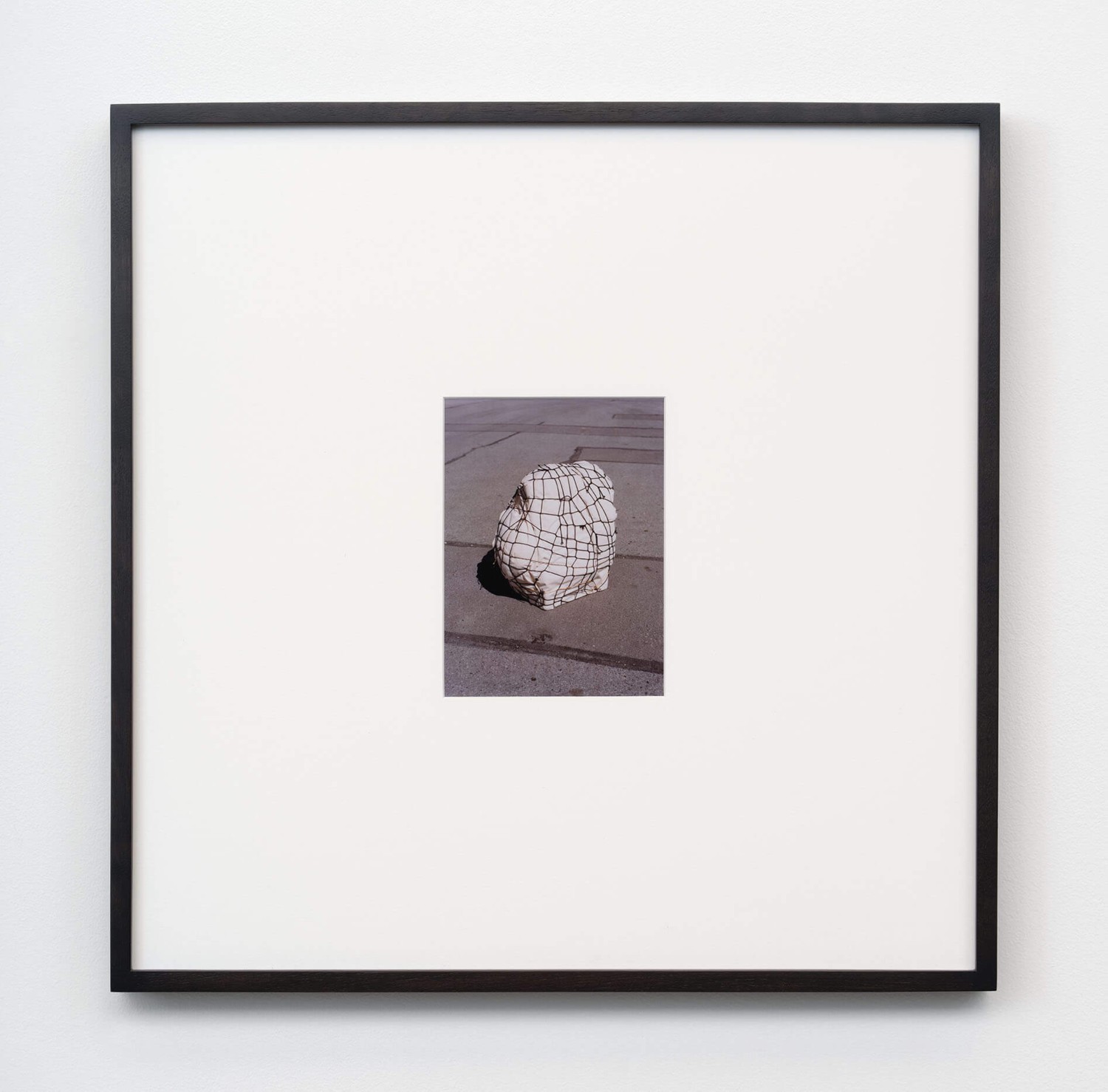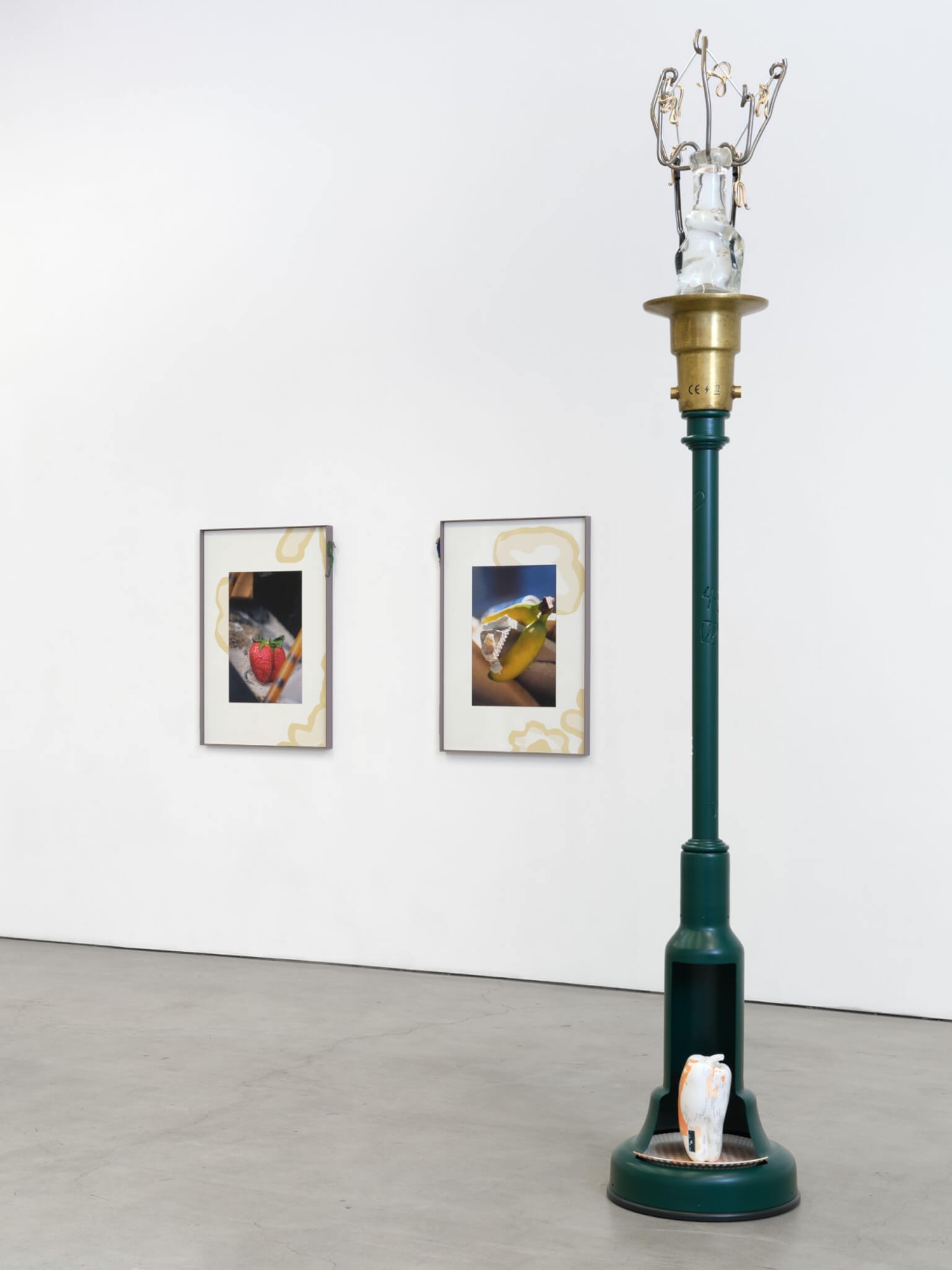Migrant Reader
- Maia Ruth Lee
François Ghebaly is proud to present Migrant Reader by Maia Ruth Lee, the artist’s first solo exhibition at the gallery.
Maia Ruth Lee’s multidisciplinary practice spans photography, video, painting, and sculpture. Busan-born, Kathmandu-raised, and now Colorado-based, her work often addresses the complexities of self and cultural preservation in times of dissonance and globalization. Serving as atlases, maps, indexes and readers, each work helps navigate a viewer into further understanding her recurring subject, the migrant.
For this exhibition, Lee considers rope-wrapped baggage often seen accompanying migrant workers and diasporic peoples from regions such as East Asia, South Asia, and the Middle East. Having relocated several times in her own life, Lee reflects on the movement of one’s body between borders, the distinctive form of accompanied baggage and what it signifies. Tenderly displaying her new works as four discrete parts—pigment prints, India ink paintings, rope pods, and a banner—Lee dissects the subject to provide an illegible but compelling language to a diasporic identity. One that is seen, but not spoken, understood, but not audible and ultimately whispered through a corporeal physicality and object-hood.
And Orchard
- Magali Reus
François Ghebaly is proud to announce Magali Reus’s And Orchard, the first exhibition by the Dutch sculptor in Los Angeles. The exhibition opens with a public reception on July 9 and remains on view through August 20.
And Orchard consists of two new series of works, “Candlelights” and “Landings,” that explore metabolism, energy, the passage of time, and the coursing lines of power that bring sustenance from the sun to our cities, homes and dinner tables.
Reus’s sculptures are the product of numerous production processes—molding, printing, sanding, casting, painting, welding, sewing, carving, 3D printing—deployed in combination and without heed to standard fabrication chronologies or practices. The resulting sculptures are in turn charismatic and evasive, telegraphing meaning through open-ended symbolism and oblique connectivity. They are, in Reus’s words, “captivating but not held captive.”
“Candlelights” consists of towering streetlamps, powder-coated in a stately, earthy green. A series of object substitutions, barely perceptible at first, destabilize this quotidian piece of urban lighting. Where a typical lamppost houses an illuminated lantern at its top, the capitals of these posts are open and oversized incandescent light bulbs. And where a typical incandescent bulb holds an electrified filament, here the curlicues of bent metal instead form cursive English words, each spelling out a different type of electrical illumination. ‘Halogen,’ ‘fluorescent,’ and ‘LED’ slide in and out of legibility as the viewer’s perspective shifts around the works.
Tammy Nguyen
- Four Ways Through a Cave
Tammy Nguyen’s storytelling expertise shines across her multidisciplinary practice which encompasses painting, drawing, artist books, prints and zines. Seamlessly fusing together a diverse set of sources ranging from geopolitics, to philosophy, to religion, to her own subjective experience, Nguyen’s layered compositions defy traditional narrative structures. Four Ways Through a Cave consists of five new miniature paintings on paper stretched over wood panels and four new leather bound artists’ books which weave together a complex, multi-dimensional tale about a country in the wake of war, the human search for truth, nature’s hunger, and the colonial legacy of Christianity. This is Nguyen’s first exhibition with the gallery.
Titled Four Ways Through a Cave: 1 - 4, Nguyen’s artist books were conceptualized following a trip to Phong Nha, a cave widely recognized as being one of the most spectacular in the world. Phong Nha is located in Phong Nha-Kẻ Bàng National Park, a UNESCO World Heritage Site in Quảng Bình Province, Vietnam, composed of over sixty miles of caves and underground rivers. Located along the Ho Chi Minh Trail, the caves of Phong Nha-Kẻ Bàng were used as a meeting place and hiding spot during the Vietnam War. Nguyen was drawn to these caves as a research site both for their primal allure and their historical significance.
Gallery Weekend Events
323 282 5187
info@ghebaly.com
Tuesday–Saturday 11am–6pm





